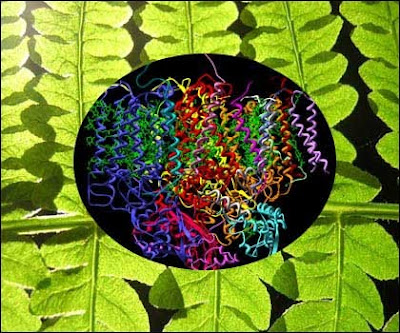Like us, plants require certain conditions to survive. An abundance of oxygen and carbon dioxide, a specific temperature, and water. Also like us they need food to survive, but they do not need complex proteins and sugars, they need the very building blocks of life in the form of elements and simple compounds.
These elements and simple compounds are the 'foods' which plants can absorbs through their roots systems, and to a lesser extent - their leaves. We call these foods 'plant nutrients'.
The problem with plant nutrients is that there are so many of them. You have your macro nutrients – nutrients that plants require large amounts of, and then you have your micro nutrients – nutrients that plants require only in small quantities.
These elements and simple compounds are the 'foods' which plants can absorbs through their roots systems, and to a lesser extent - their leaves. We call these foods 'plant nutrients'.
The problem with plant nutrients is that there are so many of them. You have your macro nutrients – nutrients that plants require large amounts of, and then you have your micro nutrients – nutrients that plants require only in small quantities.
The main macro nutrients Nitrogen (N), phosphorus - phosphates (P), and Potassium (K) are commonly found listed on the sides of packaged fertilizers either as a percentage or ratio N:P:K, but there are others - see listed below. Each nutrient is in fact an element and found within the periodic table and the capital letters (shown in brackets) are those assigned to each element.
Macro-nutrients
(H) Hydrogen - Essential for photosynthesis
(C) Carbon - Essential for photosynthesis
(O) - Oxygen - Essential for photosynthesis.
(N) Nitrogen - A vital constituent of amino acids, proteins, nucleic acids etc.
 (K) Potassium - A building block for 40 or more enzymes, and also has a important role in stomatal movement. Potassium also helps to maintain electroneutrality in plant cells.
(K) Potassium - A building block for 40 or more enzymes, and also has a important role in stomatal movement. Potassium also helps to maintain electroneutrality in plant cells.(Ca) Calcium - A vital constituent of plant cell walls amongst others.
(Mg) Magnesium - This is required non-specifically by a large number of enzymes and is also a vital part of the chlorophyll molecule.
(P) Phosphorus - This is a vital component of sugar phosphates, nucleic acids, coenzymes etc.
(S) Suphur - A vital component of proteins, lipoic acid, coenzyme A, thiamine etc.
The list of micro nutrients that plants can use is huge - numbering 72, but the most important ones to be aware of are iron, copper manganese, zinc, molybdenum, and chlorine. If your soil is deficient in any of these you will experience characteristic physiological symptoms on the leaves of your plants. This is because without these vital nutrients the plant is unable to make those critical proteins and enzymes required to function. This is also called the 'Law of the Minimum' because plants can only grow as large as the minimum available nutrient will allow.
Important Micro-nutrients
(Cl) Chlorine - This is required for the photosynthetic reactions involved in the production of oxygen
(B) Boron - Used for carbohydrate transport within the plant and also forms complex molecules within certain carbohydrates
(Fe) Iron - Vital for nitrogen fixing and respiration, iron is also a constituent of cytochromes and iron proteins involved in photosynthesis.
(Mn) Manganese - This is required non-specifically for a large number of enzymes as well as for the production of oxygen during photosynthesis.
(Zn) Zinc - This is a vital constituent for a number of important enzymes such as glutamic and alcohol dehydrogenase.
(Cu) Copper - This is an essential component of - amongst others - ascorbic acid oxidase, tyrosinase and monoamine oxidase.
(Mo) Molybdenum - This is an important constituent of nitrate reductase and is essential for nitrogen fixation.
For more information click onto:
What is Chlorosis?
What is Fertilizer?
What is Fibre?
What is Frankincense?
What is an F1 Hybrid?
What is Homeostasis?
What is Fertilizer?
What is Fibre?
What is Frankincense?
What is an F1 Hybrid?
What is Homeostasis?


